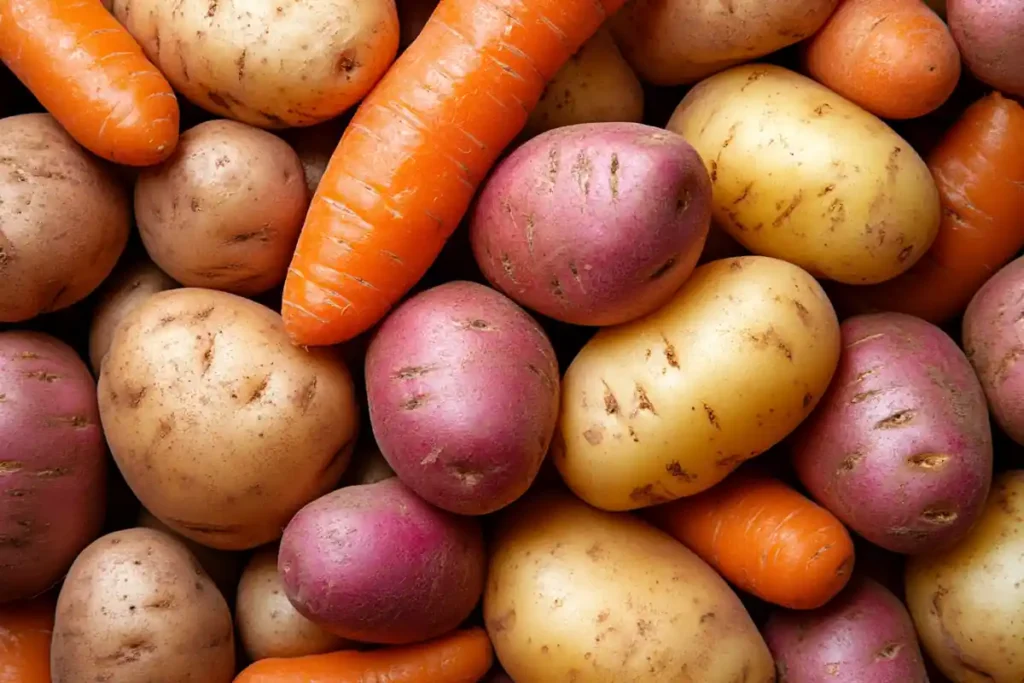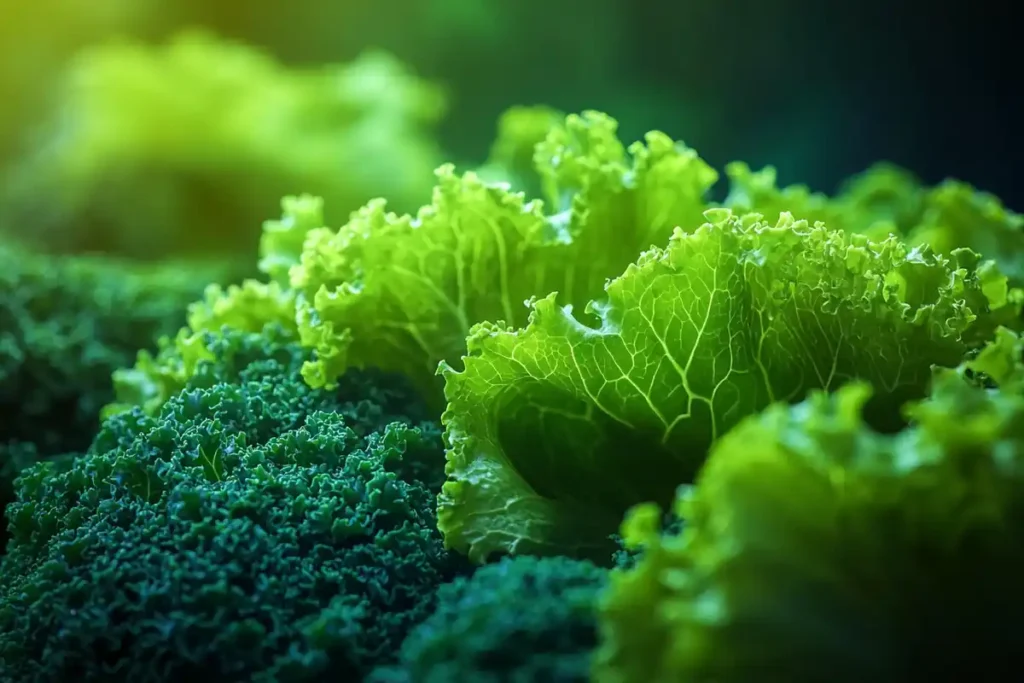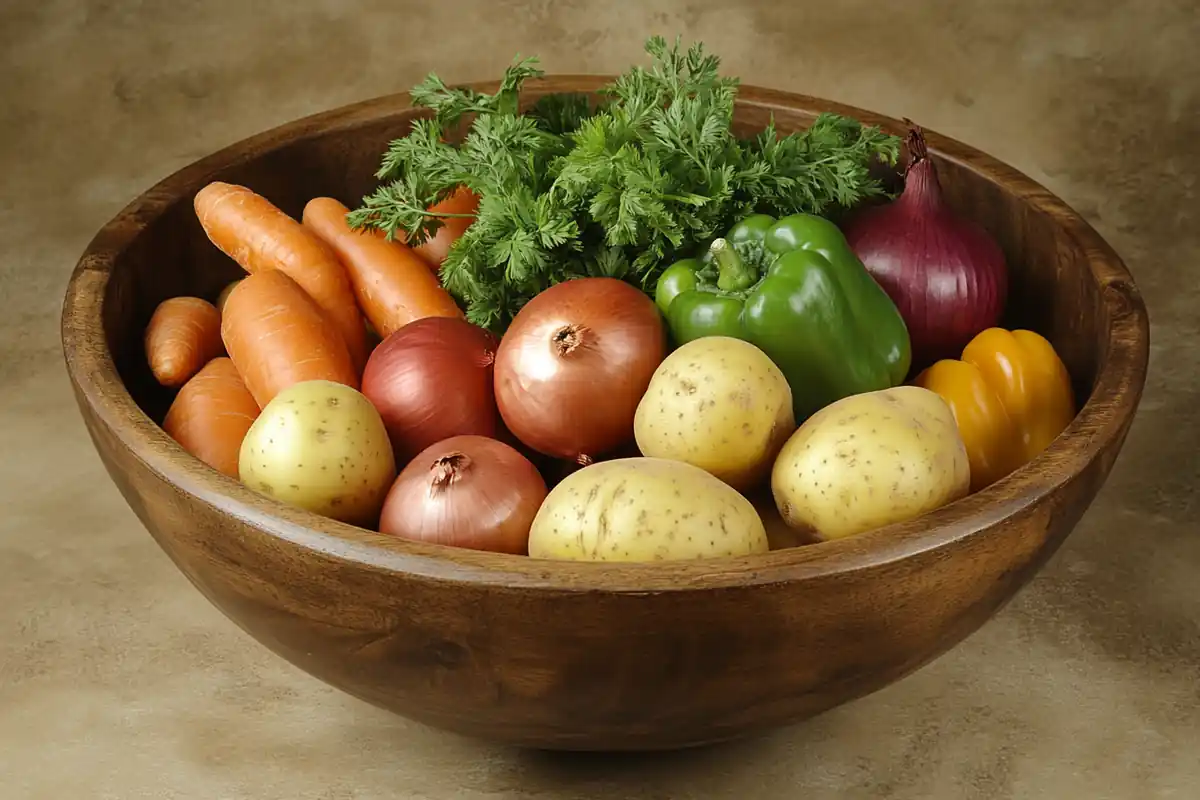A warm bowl of soup can be incredibly comforting and nourishing. But knowing what are the best vegetables to put in soup can truly elevate your culinary experience. This detailed guide will walk you through a variety of delicious and nutritious options, helping you create the perfect soup every time. We’ll cover everything from flavor profiles to cooking techniques, ensuring you have all the information you need.
Table of contents
Soup Stars: Exploring the Best Vegetables for Your Bowl
When you are making soup, the vegetables you choose can significantly impact the final result. It’s not just about throwing in whatever you have; it’s about creating a balance of flavors, textures, and nutrients. Let’s delve into the top vegetables that can transform a simple soup into a culinary delight.
Hearty Root Vegetables: The Foundation of Flavor and Substance

These root vegetables will add depth and richness to your next soup.
Root vegetables are the unsung heroes of many soups. They provide a hearty base that adds both flavor and substance. These vegetables tend to be naturally sweet and provide a wonderful richness to the broth.
- Carrots: Carrots are a classic addition to soup. They offer a natural sweetness and vibrant color. They also become beautifully tender when cooked in broth. They’re an excellent source of vitamins, too.
- Potatoes: Potatoes are a staple for adding creaminess and bulk to soups. They absorb flavors well and make your soup more filling. There are many varieties to choose from, each offering a unique texture.
- Sweet Potatoes: Sweet potatoes bring a different kind of sweetness to your soup compared to regular potatoes. They also offer a boost of vitamins and antioxidants. Their smooth texture is perfect for soups.
- Turnips: Turnips add a slightly peppery and earthy note to soups. They are often overlooked but they can enhance the balance of your dish. They also hold their shape well.
- Parsnips: Parsnips have a unique sweet and slightly spicy flavor. They complement other root vegetables beautifully. They add a subtle depth to your soup.
These hearty vegetables are generally added early in the cooking process. They require a longer time to become tender. They are the foundation for many great soups.
Leafy Greens: Adding Freshness and a Nutritional Boost

Adding these leafy greens to your soup will bring a boost of nutrients.
Leafy greens are important for adding nutrients and a touch of freshness to your soup. They cook quickly and provide a mild, earthy taste.
- Spinach: Spinach is a versatile green that wilts down easily. It provides a mild taste. It’s also packed with vitamins and minerals. It blends well into any soup.
- Kale: Kale is a sturdier green that adds a slightly bitter note. It holds its shape better than spinach. It can add a nice textural contrast to your soup.
- Collard Greens: Collard greens have a more intense flavor than spinach or kale. They need a little more time to cook, but they provide a very distinct taste to your soup. They are also very high in fiber.
- Swiss Chard: It is another good option. It has a mild, earthy taste. The stems can be cooked along with your root vegetables.
Leafy greens are best added towards the end of the cooking process. This will keep them from becoming too mushy. This ensures you get the most from their nutrients.
Alliums: The Flavor Powerhouses
Onions, garlic, and leeks are essential for creating a flavorful base for your soup. These vegetables are the foundation of most savory dishes. They bring depth and complexity to your broth.
- Onions: Onions are a must for any soup. They add a sweet, savory foundation that’s hard to beat. Sautéing them first will release their flavors and enhance your soup.
- Garlic: Garlic provides a pungent flavor that enhances many dishes. It’s a great addition to almost any type of soup. It can be added minced or whole.
- Leeks: Leeks have a milder, sweeter taste than onions. They also add a subtle flavor. Their tender texture makes them great in soups.
Sautéing these vegetables at the beginning will create a delicious base for your soup. This simple step will make a big difference in your final product.
Colorful Additions: Enhancing Visual Appeal and Flavor
Adding colorful vegetables will enhance the visual appeal of your soup. They also add unique flavors and textures. These vegetables tend to cook more quickly than root vegetables.
- Bell Peppers: Bell peppers add a sweetness and a slight crunch to your soup. They come in a variety of colors, which makes them great for enhancing visual appeal. Red, yellow, and orange peppers are sweeter, while green peppers have a slightly more bitter taste.
- Zucchini: Zucchini is a mild-tasting vegetable that absorbs other flavors very well. It’s an excellent addition to many types of soup. It adds a delicate sweetness and soft texture.
- Yellow Squash: Yellow squash is very similar to zucchini in taste and texture. It’s another great option for adding lightness and a delicate sweetness to your soup.
- Green Beans: Green beans add a nice texture to your soup. They also provide a subtle flavor. They pair well with a variety of other vegetables.
Adding these colorful vegetables later in the cooking process ensures that they don’t become mushy. They retain their shape. This brings a nice touch to the soup.
Building Your Perfect Soup: Choosing the Right Vegetables
Now that you have a good understanding of some great vegetables for soup, let’s talk about how to put them together. It’s important to pick a mix that compliments each other. Consider both flavor and texture when making your selections.
Soup Vegetable Combinations: Inspiring Ideas
Here are some popular and delicious vegetable combinations. These are ideas that will make your soups a culinary success. They offer a variety of flavors.
- Classic Chicken Noodle: This soup calls for a combination of carrots, celery, and onions to create a traditional flavor. Add shredded chicken and your choice of noodles.
- Hearty Minestrone: A variety of vegetables make this soup so special. Include beans, tomatoes, and pasta. Add zucchini, carrots, and spinach for more flavor. This hearty soup is both tasty and satisfying.
- Creamy Tomato Soup: Roasted tomatoes, onions, and garlic are the foundation for this rich soup. Blend it until smooth and add a touch of cream for an extra indulgent texture. The key is roasting the vegetables first.
- Spicy Black Bean: This soup needs a mix of black beans, corn, and bell peppers. Use onions and add a bit of jalapeño for heat. This creates a spicy and flavorful soup.
- Lentil Soup: A combination of carrots, celery, and onions is the base. Add green or brown lentils, and a touch of tomatoes for brightness. This protein-rich soup is hearty and comforting.
These vegetable combinations provide different flavors and textures. They can be tailored to your preferences. They are great starting points for making a truly memorable soup.
Cooking Techniques: Tips for Perfect Vegetables in Soup
The way you cook your vegetables in soup will greatly impact the final result. Here are some tips to ensure your soup is cooked to perfection:
- Start with Aromatics: Always sauté your onions, garlic, and other aromatics first. This will create a flavorful base. This step cannot be missed.
- Add Hearty Vegetables First: Hearty root vegetables take longer to cook. Add them early in the cooking process.
- Add Greens Later: Leafy greens cook very quickly. Add them towards the end of the cooking time.
- Don’t Overcook: Cooking vegetables for too long will make them mushy. Keep an eye on them and don’t overcook.
- Season Well: Always remember to season with salt and pepper, as this will enhance the flavor. You can also add other herbs and spices to further improve your soup’s taste.
These tips will help ensure that your vegetables cook perfectly. They will also enhance the flavors of your soup.
The Benefits of Vegetable Soup: Why They’re Great
Vegetable soups are not only delicious but also incredibly beneficial for your health. They are packed with nutrients, vitamins, and fiber. Including them in your diet can provide numerous advantages.
- Excellent for Digestion: The high fiber content in vegetables promotes healthy digestion. It can also aid in keeping your digestive system regular.
- Rich in Essential Nutrients: Vegetables are a great source of vitamins and minerals. They support overall health. They boost the nutrients you get from your food.
- Filling and Satisfying: They are generally low in calories and very filling. They’re perfect for anyone trying to maintain a healthy weight.
- Versatile and Customizable: The best part is that you can change the vegetables to suit your own taste. This makes them very flexible.
- Ideal for Vegetarians: Vegetable soups are a fantastic option for those who do not consume meat. They offer a complete meal. They are also incredibly flavorful.
Adding vegetable soup into your diet is a great way to nourish your body. It can also be a very satisfying and tasty meal option.
Tailoring Your Soup: Vegetable Choices for Your Needs
Everyone has different tastes and dietary requirements. It’s important to choose vegetables that suit your personal needs and preferences. Selecting the right vegetables is key to making a soup that everyone will enjoy.
Meeting Dietary Needs: Smart Vegetable Choices
Those with specific dietary restrictions can still enjoy delicious soups. Here are a few guidelines to help you choose the best vegetables:
- Low-Carb Options: Choose vegetables with lower carbohydrate content. Good options are spinach, broccoli, and cauliflower. These are great for limiting carbohydrates in your diet.
- Gluten-Free Choices: Most vegetables are naturally gluten-free. Always check if any added ingredients might contain gluten. Be sure to always read labels.
- High-Fiber Selections: Select vegetables like peas, carrots, and lentils. These are rich in fiber and great for your digestive health. They are a great addition to any soup.
- Lactose-Free Vegetables: Most vegetables are naturally lactose-free. If you are making a cream-based soup, avoid milk and cheese. Use coconut milk or broth instead.
By carefully selecting your vegetables, everyone can enjoy a delicious and compatible soup. It will also be compatible with their dietary needs.
Flavor Harmony: Vegetable Pairings
The art of creating a delicious soup lies in how you pair different flavors. Knowing which vegetables go well together makes a difference.
- Sweet and Savory Pairings: Combine vegetables like sweet potatoes with onions. They compliment each other and create a balanced flavor. It results in a delightful taste.
- Earthy and Bright Pairings: Pair earthy vegetables like mushrooms with brighter ones, like bell peppers. This will add a unique depth to your soup. The balance of flavors makes it so appealing.
- Spicy and Mild Pairings: Add a little spice with jalapeño and balance it with mild vegetables like zucchini. This brings a dynamic taste. The variations in flavor provide a delicious experience.
- Textural Contrasts: Include some soft vegetables along with those that will retain some of their crunch. For example, you could include cooked spinach and some diced carrots. This will enhance your experience.
Consider how flavors compliment each other. This makes a great difference in the overall taste of your soup.
Seasonal Vegetable Choices: The Freshest Flavors
Using seasonal vegetables is a fantastic way to enjoy the freshest produce. It also enhances the taste of your soup. Here are some ideas to help you choose:
- Spring: Asparagus, peas, and new potatoes are perfect for light spring soups.
- Summer: Tomatoes, zucchini, and corn are great additions for fresh summer soups.
- Fall: Squashes, pumpkins, and root vegetables are great options for rich fall soups.
- Winter: Cabbage, carrots, and parsnips make hearty soups in winter.
Using seasonal vegetables ensures freshness. It helps to support local farmers. It brings the best flavor to your soup.
Final Thoughts on Vegetables for Soup
Choosing what are the best vegetables to put in soup doesn’t have to be complicated. You can create amazing and nutritious meals by exploring different options and combinations. There are so many possibilities, from hearty root vegetables to fresh leafy greens. A delicious soup is just a few vegetable choices away! Experiment with seasonal vegetables and try different variations. Have fun, and enjoy the process of cooking. The key is to consider your own dietary needs and preferences. Always feel free to be creative and enjoy the process.
Frequently Asked Questions
A wide variety of vegetables are good in soup. Some common choices include carrots, potatoes, onions, and celery. Leafy greens like spinach and kale, as well as heartier vegetables like turnips, are also fantastic. The best choices often depend on your taste preferences.
The best thing to put in soup really depends on the type of soup. For most recipes, a combination of a flavorful broth, aromatics like onions and garlic, and a mix of different vegetables creates a well-rounded soup. Proteins, such as chicken or beans, can also be added for a more complete meal.
You can add many things to vegetable soup to give it more flavor. Using herbs and spices will make a big difference. Sautéing your aromatics, such as onions and garlic, at the beginning adds extra depth. Adding a splash of lemon juice or a bit of vinegar can also brighten the flavors.
It’s best to add the vegetables in order of how long they take to cook. Hearty root vegetables like potatoes and carrots should go in early. Softer vegetables, like zucchini and leafy greens, should go in towards the end. This method helps all vegetables cook perfectly.

